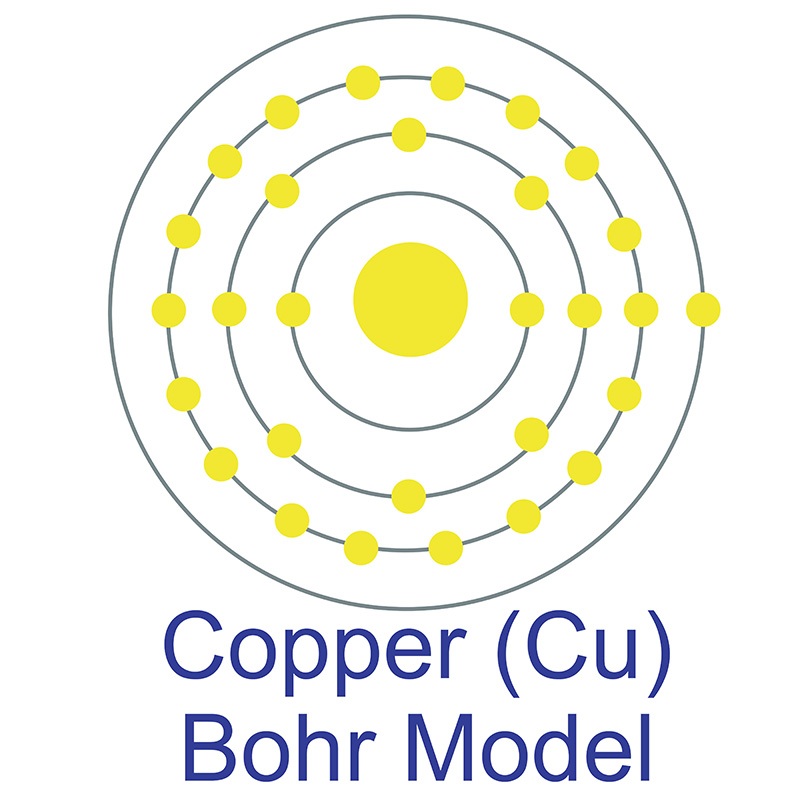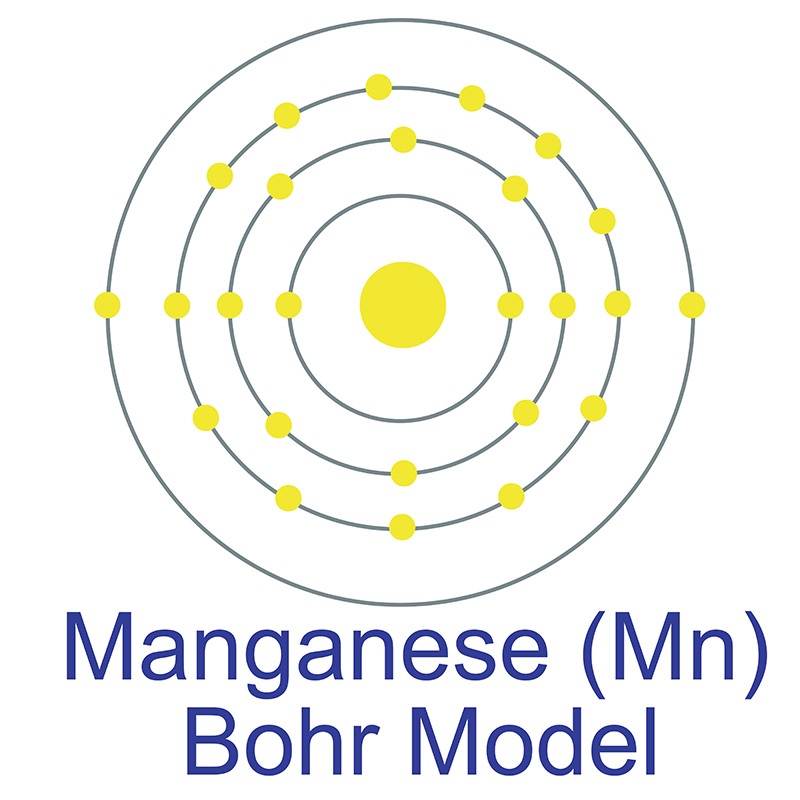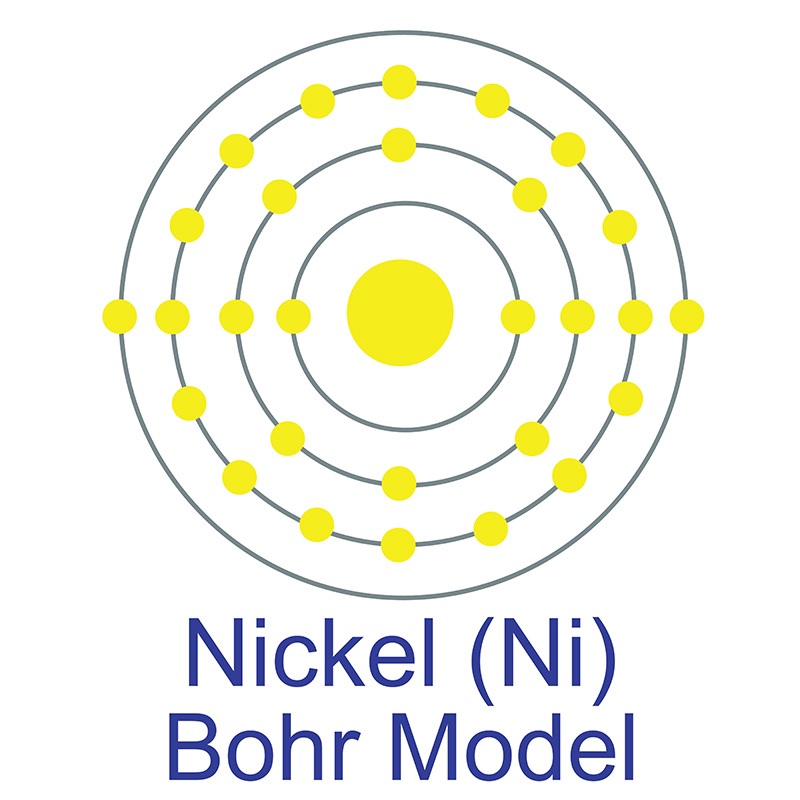SECTION 1. IDENTIFICATION
Product Name: Copper Manganese Nickel Alloy Sputtering Target
Product Number: All applicable American Elements product codes, e.g. CU-MNNI-02-ST
, CU-MNNI-03-ST
, CU-MNNI-04-ST
, CU-MNNI-05-ST
CAS #: 12606-19-8
Relevant identified uses of the substance: Scientific research and development
Supplier details:
American Elements
10884 Weyburn Ave.
Los Angeles, CA 90024
Tel: +1 310-208-0551
Fax: +1 310-208-0351
Emergency telephone number:
Domestic, North America: +1 800-424-9300
International: +1 703-527-3887
SECTION 2. HAZARDS IDENTIFICATION
Classification of the substance or mixture in accordance with 29 CFR 1910 (OSHA HCS)
The substance is not classified according to the Globally Harmonized System (GHS).
Hazards not otherwise classified No data available
GHS label elements N/A
Hazard pictograms N/A
Signal word N/A
Hazard statements N/A
WHMIS classification
D2A - Very toxic material causing other toxic effects
Classification system
HMIS ratings (scale 0-4)
(Hazardous Materials Identification System)
Health (acute effects) = 0
Flammability = 0
Physical Hazard = 0
Other hazards
Results of PBT and vPvB assessment
PBT: N/A
vPvB: N/A
SECTION 3. COMPOSITION/INFORMATION ON INGREDIENTS
Substances
CAS No. / Substance Name:
12606-19-8 Copper Manganese Nickel Alloy
SECTION 4. FIRST AID MEASURES
Description of first aid measures
General information No special measures required.
If inhaled: Seek medical treatment in case of complaints.
In case of skin contact: Generally the product does not irritate the skin.
In case of eye contact:
Rinse opened eye for several minutes under running water. If symptoms persist, consult a doctor.
If swallowed:
If symptoms persist consult doctor.
Information for doctor
Most important symptoms and effects, both acute and delayed:
No data available
Indication of any immediate medical attention and special treatment needed:
No data available
SECTION 5. FIREFIGHTING MEASURES
Extinguishing media
Suitable extinguishing agents Product is not flammable. Use fire-fighting measures that suit the surrounding fire.
Special hazards arising from the substance or mixture If this product is involved in a fire, the following can be released:
Advice for firefighters
Protective equipment: No special measures required.
SECTION 6. ACCIDENTAL RELEASE MEASURES
Personal precautions, protective equipment and emergency procedures Not required.
Environmental precautions: Do not allow material to be released to the environment without official permits.
Methods and materials for containment and cleanup: Pick up mechanically.
Prevention of secondary hazards: No special measures required.
Reference to other sections
See Section 7 for information on safe handling
See Section 8 for information on personal protection equipment.
See Section 13 for disposal information.
SECTION 7. HANDLING AND STORAGE
Handling
Precautions for safe handling
Keep container tightly sealed.
Store in cool, dry place in tightly closed containers.
Information about protection against explosions and fires: No special measures required.
Conditions for safe storage, including any incompatibilities
Requirements to be met by storerooms and receptacles: No special requirements.
Information about storage in one common storage facility: Not required.
Further information about storage conditions:
Keep container tightly sealed.
Store in cool, dry conditions in well-sealed containers.
Specific end use(s) No data available
SECTION 8. EXPOSURE CONTROLS/PERSONAL PROTECTION
Additional information about design of technical systems: No further data; see section 7.
Control parameters
Components with limit values that require monitoring at the workplace:
Copper
mg/m3
ACGIH TLV 1 (dust, mist)
0.2 (fume)
Austria MAK 1
0.1 (fume)
Belgium TWA 0.2 (fume)
1 (dust)
Denmark TWA 0.1
Finland TWA 0.2 (fume)
1 (dust)
France VME 0.1 (fume)
1 (dust)
1; 2-STEL (dust)
Germany MAK 0.1 (fume)
1 (dust)
Hungary TWA 0.2; 0.4-STEL (dust)
Korea TLV 1 (dust, mist)
0.2 (fume)
Netherlands MAC-TGG 1 (dust)
Norway TWA 0.05
0.1 (fume)
Poland TWA 0.1; 0.3-STEL (fume)
1; 2-STEL (dust)
Russia 1-STEL (dust)
Sweden NGV 0.2 (resp. dust)
1 (total dust)
Switzerland MAK-W 0.1; 0.2-KZG-W (fume)
1; 1-KZG-W
United Kingdom TWA 0.2 (fume)
1; 2-STEL (dust, mist)
1; 3-STEL
USA PEL TWA 0.1 (fume)
1 (dust, mist)
Manganese, elemental & inorganic compounds (as Mn)
mg/m3
ACGIH TLV 0.2
Austria MAK 5
Belgium TWA 5
Denmark TWA 2.5
Finland TWA 0.5
Hungary TWA 0.3; 0.6-STEL
Germany MAK 0.55
Japan OEL 0.3 (respirable dust)
Korea TLV 0.2
Netherlands MAC-TGG 1; 3-MAC-K
Norway TWA 2.5
Poland TWA 0.3; 5-MAC
Russia 0.2-STEL (fume)
Sweden NGV 1; 2.5-TGV (respirable dust)
2.5; 5-TGV (total dust)
United Kingdom TWA 5
USA PEL 5-Ceiling
Copper
mg/m3
ACGIH TLV 1 (dust, mist); 0.2 (fume)
Austria MAK 1
0.1 (fume)
Belgium TWA 0.2 (fume); 1 (dust)
Denmark TWA 0.1
Finland TWA 0.2 (fume); 1 (dust)
France VME 0.2 (fume); 1 (dust)
1; 2-STEL (dust)
Germany MAK 0.1 (fume); 1 (dust)
Hungary TWA 0.2; 0.4-STEL (dust)
Netherlands MAC-TGG 1 (dust)
Norway TWA 0.05
0.1 (fume)
Poland TWA 0.1; 0.3-STEL (fume)
1; 2-STEL (dust)
Russia 1-STEL (dust)
Sweden NGV 0.2 (resp. dust); 1 (total dust)
Switzerland MAK-W 0.1; 0.2-KZG-W (fume)
1; 1-KZG-W
United Kingdom TWA 0.2 (fume)
1; 2-STEL (dusts and mists as Cu)
1; 3-STEL
USA PEL 0.1 (fume, dusts & mists)
Nickel and inorganic compounds, as Ni
mg/m3
ACGIH TLV 1.5, A5-inhalable particulate (metal)
0.2, A1-inhalable particulate (insoluble compounds)
0.1, A4-inhalable particulate (soluble compounds)
Austria Carcinogen
Denmark TWA 0.5
Finland TWA 0.1 (skin) Carcinogen
France VME 1; C3-Carcinogen
Germany Carcinogen
Hungary 0.005-STEL; Carcinogen (insoluble compounds)
Japan 1; 2B-Carcinogen
Korea TLV 1.5
Netherlands MAC-TGG 1; Carcinogen
1 (insoluble compounds)
Norway TWA 0.05
Poland TWA 0.25
Russia 0.05-STEL
Sweden NGV 0.5 (dust)
Switzerland MAK-W 0.5; Carcinogen
United Kingdom TWA 0.1
USA PEL 1
Additional information: No data
Exposure controls
Personal protective equipment
Follow typical protective and hygienic practices for handling chemicals.
Maintain an ergonomically appropriate working environment.
Breathing equipment: Not required.
Protection of hands: Not required.
Eye protection: Safety glasses
Body protection: Protective work clothing.
SECTION 9. PHYSICAL AND CHEMICAL PROPERTIES
Information on basic physical and chemical properties
Appearance:
Form: Solid in various forms (wire, foil, rod)
Color: Silver-colored
Odor: Odorless
Odor threshold: No data available.
pH: N/A
Melting point/Melting range: No data available
Boiling point/Boiling range: No data available
Sublimation temperature / start: No data available
Flash point: N/A
Flammability (solid, gas) Fine powder: highly flammable
Ignition temperature: No data available
Decomposition temperature: No data available
Autoignition: No data available.
Danger of explosion: Product does not present an explosion hazard.
Explosion limits:
Lower: No data available
Upper: No data available
Vapor pressure: N/A
Density: No data available
Relative density No data available.
Vapor density N/A
Evaporation rate N/A
Solubility in Water (H2O): Insoluble
Partition coefficient (n-octanol/water): No data available.
Viscosity:
Dynamic: N/A
Kinematic: N/A
Other information No data available
SECTION 10. STABILITY AND REACTIVITY
Reactivity No data available
Chemical stability Stable under recommended storage conditions.
Thermal decomposition / conditions to be avoided: Decomposition will not occur if used and stored according to specifications.
Possibility of hazardous reactions Very fine powder: spontaneously flammable in air.
Conditions to avoid No data available
Incompatible materials:
Oxidizing agents
Interhalogens
Halogens
Sulfur
Ammonia
Hazardous decomposition products: Metal oxide fume
SECTION 11. TOXICOLOGICAL INFORMATION
Information on toxicological effects
Acute toxicity: No effects known.
LD/LC50 values that are relevant for classification: No data
Skin irritation or corrosion: Generally the product does not irritate the skin.
Eye irritation or corrosion: No irritant effect.
Sensitization: No sensitizing effects known.
Germ cell mutagenicity: No effects known.
Carcinogenicity:
EPA-A: human carcinogen: sufficient evidence from epidemiologic studies to support a causal association between exposure and cancer.
IARC-2B: Possibly carcinogenic to humans: limited evidence in humans in the absence of sufficient evidence in experimental animals.
NTP-R: Reasonably anticipated to be a carcinogen: limited evidence from studies in humans or sufficient evidence from studies in experimental animals.
ACGIH A5: Not suspected as a human carcinogen: Not suspected as a human carcinogen on the basis of properly conducted epidemiologic studies in humans.
Studies have sufficiently long follow-up, reliable exposure histories, sufficiently high dose, and adequate statistical power to conclude that exposure to the agent
does not convey a significant risk of cancer to humans. Evidence suggesting a lack of carcinogenicity in experimental animals will be considered if it is supported by
other relevant data.
The Registry of Toxic Effects of Chemical Substances (RTECS) contains tumorigenic and/or carcinogenic and/or neoplastic data for this substance.
Reproductive toxicity: No effects known.
Specific target organ system toxicity - repeated exposure: No effects known.
Specific target organ system toxicity - single exposure: No effects known.
Aspiration hazard: No effects known.
Subacute to chronic toxicity:
Nickel and nickel compounds may cause a form of dermatitis known as nickel itch. They may also cause intestinal disorders, convulsions and asphyxia. Airborne
nickel contaminated dusts are regarded as carcinogenic to the respiratory tract.
Chronic exposure to manganese may cause impairment to the central nervous system. Symptoms include sluggishness, sleepiness, muscle weakness, loss of
facial muscle control, edema, emotional disturbances, spastic gait and falling.
Copper compounds may be irritating to the skin, eyes and respiratory tract. They may cause metal fume fever, hemolysis of the red blood cells and injury to the
liver, lungs, kidneys and pancreas. Ingestion may also cause vomiting, gastric pain, dizziness, anemia, cramps, convulsions, shock, coma and death.
Subacute to chronic toxicity: No effects known.
Additional toxicological information: To the best of our knowledge the acute and chronic toxicity of this substance is not fully known.
SECTION 12. ECOLOGICAL INFORMATION
Toxicity
Aquatic toxicity: No data available
Persistence and degradability No data available
Bioaccumulative potential No data available
Mobility in soil No data available
Additional ecological information:
Do not allow material to be released to the environment without official permits.
Avoid transfer into the environment.
Results of PBT and vPvB assessment
PBT: N/A
vPvB: N/A
Other adverse effects No data available
SECTION 13. DISPOSAL CONSIDERATIONS
Waste treatment methods
Recommendation Consult official regulations to ensure proper disposal.
Uncleaned packagings:
Recommendation: Disposal must be made according to official regulations.
SECTION 14. TRANSPORT INFORMATION
Not a hazardous material for transportation.
UN-Number
DOT, IMDG, IATA None
UN proper shipping name
DOT, IMDG, IATA None
Transport hazard class(es)
DOT, ADR, IMDG, IATA
Class None
Packing group
DOT, IMDG, IATA None
Environmental hazards: N/A
Special precautions for user N/A
Transport in bulk according to Annex II of MARPOL73/78 and the IBC Code N/A
Transport/Additional information: Not dangerous according to the above specifications.
DOT
Marine Pollutant (DOT): No
SECTION 15. REGULATORY INFORMATION
Safety, health and environmental regulations/legislation specific for the substance or mixture
GHS label elements N/A
Hazard pictograms N/A
Signal word N/A
Hazard statements N/A
National regulations
All components of this product are listed in the U.S. Environmental Protection Agency Toxic Substances Control Act Chemical substance Inventory.
SARA Section 313 (specific toxic chemical listings)
Copper Manganese Nickel Alloy
California Proposition 65
Prop 65 - Chemicals known to cause cancer
Copper Manganese Nickel wire
Prop 65 - Developmental toxicity Substance is not listed.
Prop 65 - Developmental toxicity, female Substance is not listed.
Prop 65 - Developmental toxicity, male Substance is not listed.
Information about limitation of use:
For use only by technically qualified individuals.
This product contains nickel and is subject to the reporting requirements of section 313 of the Emergency Planning and Community Right to Know act of 1986 and
40CFR372.
This product contains copper and is subject to the reporting requirements of section 313 of the Emergency Planning and Community Right to Know Act of 1986 and
40CFR372.
This product contains manganese and is subject to the reporting requirements of section 313 of the Emergency Planning and Community Right to Know Act of 1986
and 40CFR372.
Other regulations, limitations and prohibitive regulations
Substance of Very High Concern (SVHC) according to the REACH Regulations (EC) No. 1907/2006. Substance is not listed.
The conditions of restrictions according to Article 67 and Annex XVII of the Regulation (EC) No 1907/2006 (REACH) for the manufacturing, placing on the
market and use must be observed.
Substance is not listed.
Annex XIV of the REACH Regulations (requiring Authorisation for use) Substance is not listed.
Chemical safety assessment: A Chemical Safety Assessment has not been carried out.
SECTION 16. OTHER INFORMATION
Safety Data Sheet according to Regulation (EC) No. 1907/2006 (REACH). The above information is believed to be correct but does not purport to be all inclusive and shall be used only as a guide. The information in this document is based on the present state of our knowledge and is applicable to the product with regard to appropriate safety precautions. It does not represent any guarantee of the properties of the product. American Elements shall not be held liable for any damage resulting from handling or from contact with the above product. See reverse side of invoice or packing slip for additional terms and conditions of sale. COPYRIGHT 1997-2022 AMERICAN ELEMENTS. LICENSED GRANTED TO MAKE UNLIMITED PAPER COPIES FOR INTERNAL USE ONLY.
 Copper (atomic symbol: Cu, atomic number: 29) is a Block D, Group 11, Period 4 element with an atomic weight of 63.546. The number of electrons in each of copper's shells is 2, 8, 18, 1 and its electron configuration is [Ar]3d10 4s1. The copper atom has a radius of 128 pm and a Van der Waals radius of 186 pm. Copper was first discovered by Early Man prior to 9000 BC. In its elemental form, copper has a reddish-orange metallic and lustrous appearance. Of all pure metals, only silver
Copper (atomic symbol: Cu, atomic number: 29) is a Block D, Group 11, Period 4 element with an atomic weight of 63.546. The number of electrons in each of copper's shells is 2, 8, 18, 1 and its electron configuration is [Ar]3d10 4s1. The copper atom has a radius of 128 pm and a Van der Waals radius of 186 pm. Copper was first discovered by Early Man prior to 9000 BC. In its elemental form, copper has a reddish-orange metallic and lustrous appearance. Of all pure metals, only silver  has a higher electrical conductivity. The origin of the word copper comes from the Latin word 'cuprium' which translates as "metal of Cyprus," as the Mediterranean island of Cyprus was known as an ancient source of mined copper..
has a higher electrical conductivity. The origin of the word copper comes from the Latin word 'cuprium' which translates as "metal of Cyprus," as the Mediterranean island of Cyprus was known as an ancient source of mined copper..
 The number of electrons in each of Manganese's shells is [2, 8, 13, 2] and its electron configuration is [Ar] 3d5 4s2. The manganese atom has a radius of 127 pm and a Van der Waals radius of 197 pm. Manganese was first discovered by Torbern Olof Bergman in 1770 and first isolated by Johann Gottlieb Gahn in 1774. In its elemental form, manganese has a silvery metallic appearance.
The number of electrons in each of Manganese's shells is [2, 8, 13, 2] and its electron configuration is [Ar] 3d5 4s2. The manganese atom has a radius of 127 pm and a Van der Waals radius of 197 pm. Manganese was first discovered by Torbern Olof Bergman in 1770 and first isolated by Johann Gottlieb Gahn in 1774. In its elemental form, manganese has a silvery metallic appearance.  It is a paramagnetic metal that oxidizes easily in addition to being very hard and brittle. Manganese is found as a free element in nature and also in the minerals pyrolusite, braunite, psilomelane, and rhodochrosite. The name Manganese originates from the Latin word mangnes, meaning "magnet."
It is a paramagnetic metal that oxidizes easily in addition to being very hard and brittle. Manganese is found as a free element in nature and also in the minerals pyrolusite, braunite, psilomelane, and rhodochrosite. The name Manganese originates from the Latin word mangnes, meaning "magnet." The number of electrons in each of nickel's shells is [2, 8, 16, 2] and its electron configuration is [Ar]3d8 4s2. Nickel was first discovered by Alex Constedt in 1751. The nickel atom has a radius of 124 pm and a Van der Waals radius of 184 pm. In its elemental form, nickel has a lustrous metallic silver appearance. Nickel is a hard and ductile
The number of electrons in each of nickel's shells is [2, 8, 16, 2] and its electron configuration is [Ar]3d8 4s2. Nickel was first discovered by Alex Constedt in 1751. The nickel atom has a radius of 124 pm and a Van der Waals radius of 184 pm. In its elemental form, nickel has a lustrous metallic silver appearance. Nickel is a hard and ductile  It is one of four elements that are ferromagnetic and is used in the production of various type of magnets for commercial use. Nickel is sometimes found free in nature but is more commonly found in ores. The bulk of mined nickel comes from laterite and magmatic sulfide ores. The name originates from the German word kupfernickel, which means "false
It is one of four elements that are ferromagnetic and is used in the production of various type of magnets for commercial use. Nickel is sometimes found free in nature but is more commonly found in ores. The bulk of mined nickel comes from laterite and magmatic sulfide ores. The name originates from the German word kupfernickel, which means "false 